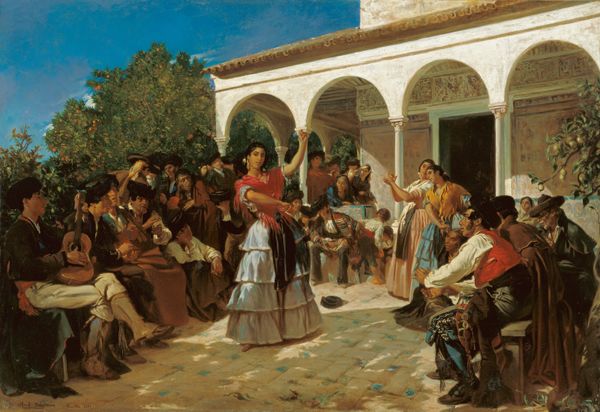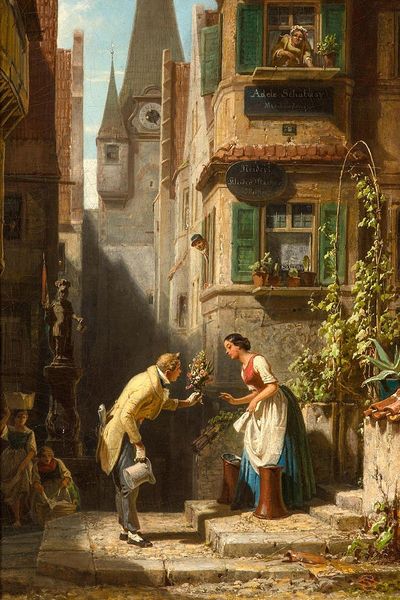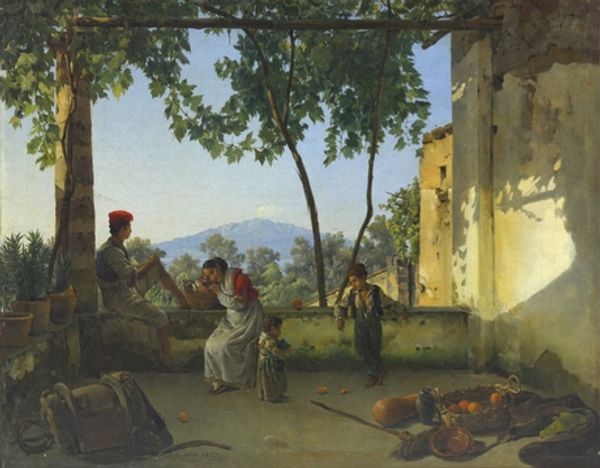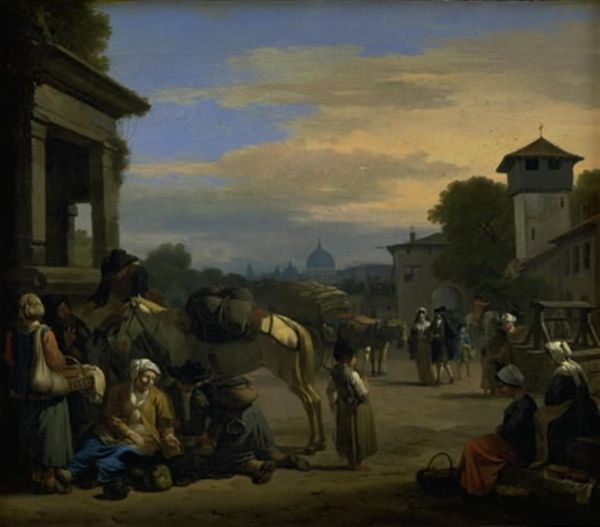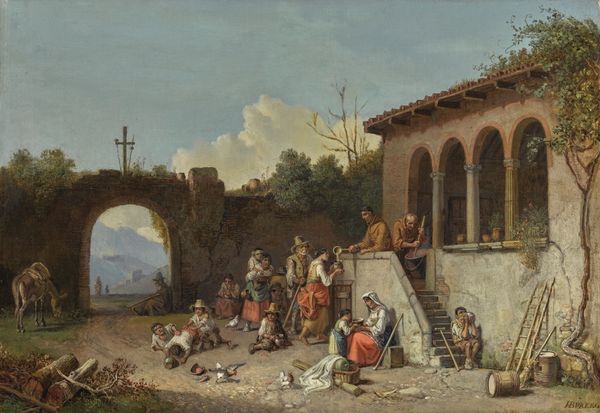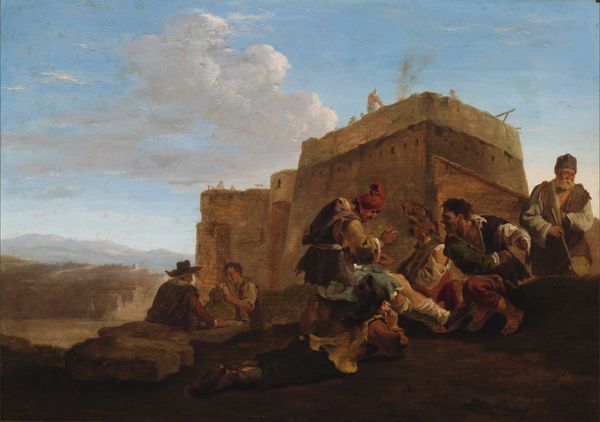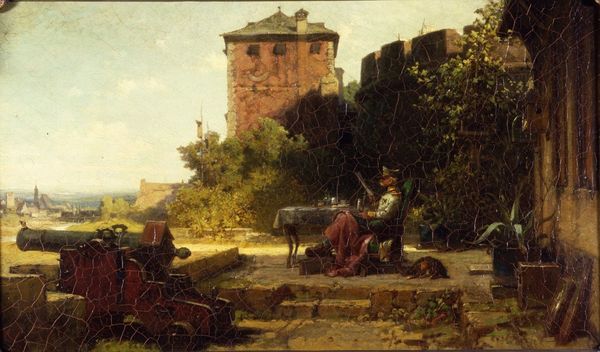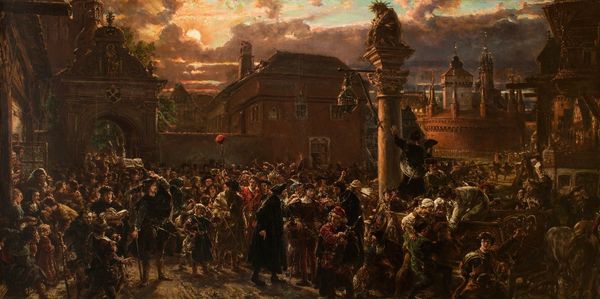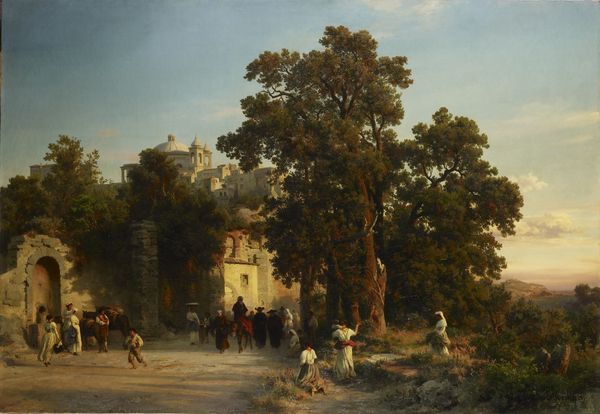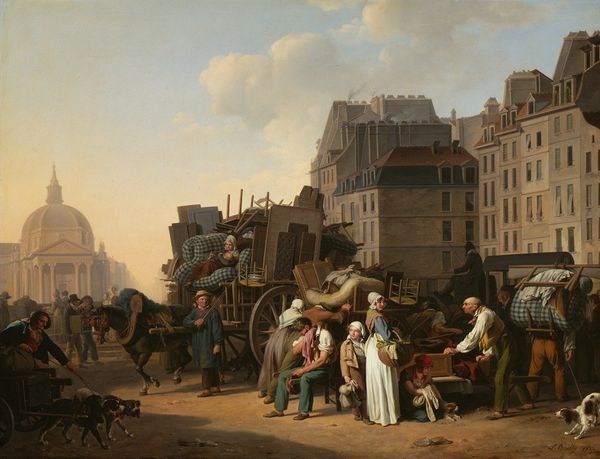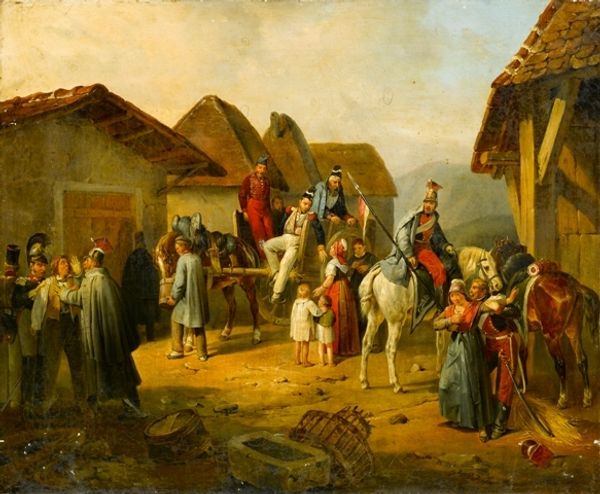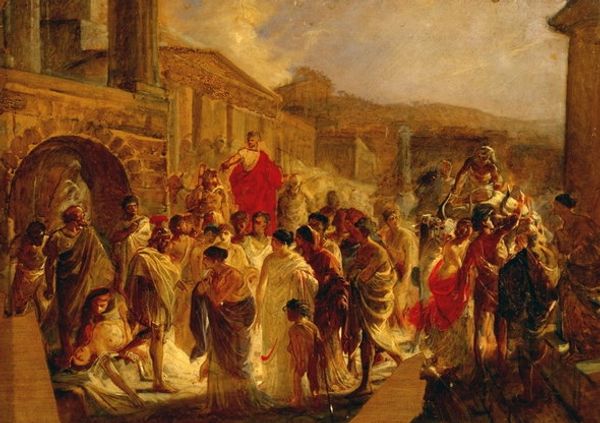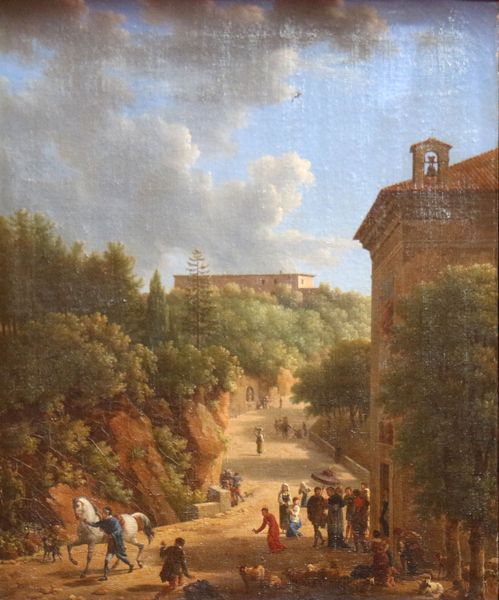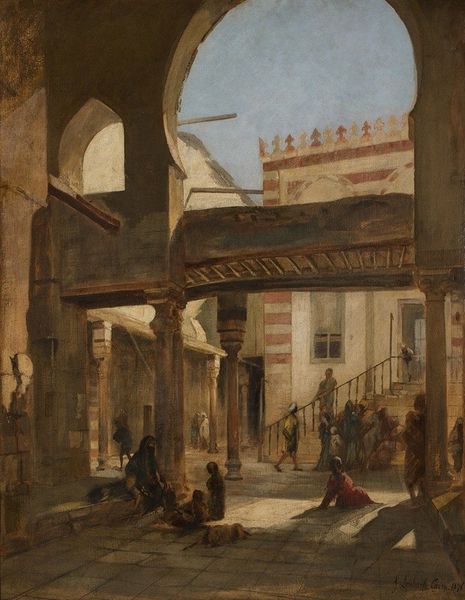
painting, oil-paint, canvas
#
gouache
#
painting
#
oil-paint
#
landscape
#
oil painting
#
canvas
#
underpainting
#
romanticism
#
cityscape
#
genre-painting
#
academic-art
#
mixed media
Dimensions: 68.5 cm (height) x 81 cm (width) (Netto)
Curator: Ah, look at this gem! Julius Friedländer's "The Upper Flights of the Spanish Steps in Rome," painted in 1847. It’s oil on canvas, brimming with life and light. Editor: My first thought? A bustling stage. It feels theatrical, with all these figures caught mid-scene on a grand staircase. A kind of sun-drenched tableau vivant. Curator: Precisely. The Spanish Steps were a hub for artists and tourists then. Friedländer captures the social tapestry so well, doesn't he? Each figure, an archetype of Roman society. You'll notice mendicants, merchants, and women in national costume. It is fascinating how the architecture symbolizes access, connecting different social strata, each step marking a stage in this shared space. Editor: I’m really drawn to the way he handles the light; it gives the piece such a dreamy atmosphere, almost hazy. Though some figures seem crisply defined, others are almost dissolving into it, into the grand design of it all, becoming tiny echoes of a much bigger social theme that, honestly, leaves a sour taste in my mouth today... This separation in a city center that supposedly embraced everybody with open arms... Ironical, maybe. Curator: It echoes the Romantic ideal of capturing a specific time and place, elevating a fleeting moment to something timeless. These everyday moments were seen as portals into a more profound understanding of the world and of our selves. Each costume or social category here presented and carefully placed at key "symbolic" spots across the canvas. The underpainting peeking here and there reveals all the original intention of Friedländer. Editor: You know, stepping back, I think I get why it feels stagey. It's carefully composed, each figure placed just so, like actors awaiting their cues. Makes me think of those old postcards... sort of romanticized, a little too polished. Curator: I can appreciate that point of view. He does meticulously arrange the figures, like characters in a play. But is the artist merely orchestrating stereotypes or immortalizing living history? Is there really so much artifice involved as to see through a façade rather than looking at a honest landscape image from the moment? Perhaps he is attempting to encapsulate what it felt to be present, as a local or a traveller in 1847 Rome? Editor: Food for thought indeed. Overall, an enchanting, if slightly idealised, glimpse of 19th-century Rome and its society in that specific spot of the city. Curator: Yes, it’s an exquisite blend of history, artistry, and a snapshot of a specific time—or perhaps, to some, a reminder that many things change to remain always the same.
Comments
No comments
Be the first to comment and join the conversation on the ultimate creative platform.
